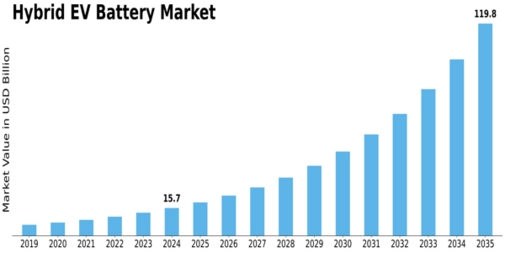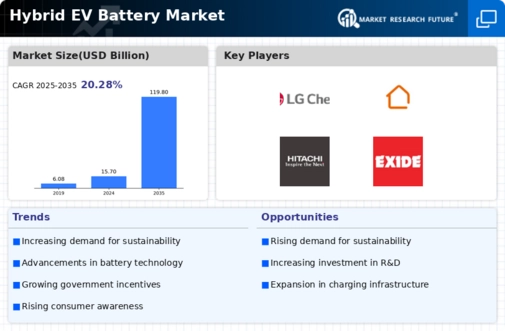Leading market players are investing heavily in research and development to expand their product lines, which will help the hybrid EV battery market grow even more. There are some strategies for action that market participants are implementing to increase their presence around the world's footprint, with important market developments including new product launches, contractual agreements, mergers and acquisitions, higher investments, and collaboration with other organizations. To expand and survive in a more competitive and rising market climate, the hybrid EV battery industry must offer cost-effective items.
Manufacturing locally to minimize operational costs is one of the key business tactics manufacturer use in the hybrid EV battery industry to benefit clients and increase the market sector. In recent years, the hybrid EV battery industry has offered some of the most significant technological advancements. Major players in the hybrid EV battery market, including Toshiba Corporation (Japan), LG Chem (South Korea), Samsung Sdi Co. Ltd (South Korea), Panasonic Corporation (Japan), Saft (France), GS Yuasa International Ltd. (Japan), BYD Co.
Ltd. (China), Contemporary Amperex Technology Co., Ltd. (China), Hitachi Ltd. (Japan), Nissan Motor Corporation (Japan), Exide Industries Ltd. (India), and A123 Systems LLC (US), and others are attempting to growing market demand by investing in research and development operations.
Samsung SDI is a company that provides eco-friendly and sustainable energy solutions. They committed to offering consumers the most innovative and cutting-edge products for electric vehicles in the automotive industry. Samsung SDI intends to introduce distinctive goods based on cutting-edge technology to solidify its market leadership in the present markets. It will also focus on technology competitiveness and marketing expertise to get a competitive edge in the lucrative next-generation markets due to the projected continued growth of the premium TV and wearable device sectors.
It also plan to create a technique for swiftly delivering flexible display materials to dominate the industry for cutting-edge mobile phones.
In March 2022, Samsung SDI disclosed that it had inked a contract with Sungkyunkwan University to launch a course on battery technologies. A signing ceremony was held on the campus of Sungkyunkwan University, and Dong-real Shin, the president of the university, as well as other senior administrators, participated. Following the agreement, the parties will establish and run a course that teaches students about creating future rechargeable batteries to produce experts in battery materials, cells, and systems.
Panasonic Corporation has been advancing culture since its establishment in 1918, trying to "improve and enhance society." To build an "ideal society" rich in monetary and spiritual prosperity, it will keep adding value by tackling social concerns head-on. The Panasonic Group transitioned to an operating company system on April 1, 2022, with Panasonic Holdings Corporation serving as a holding company with eight companies under its wing. The Panasonic Group is a leader in designing and producing cutting-edge electronics, buildings, automobiles, industries, communications, and energy systems.
In May 2023, Panasonic Industry Co., Ltd. created the high-thermal conductive film R-2400 for multilayer circuit boards. The film has set industry records in both areas with a high thermal conductivity of 2.7 W/mK and good resin flowability that permits the multilayering of circuit boards.







Leave a Comment